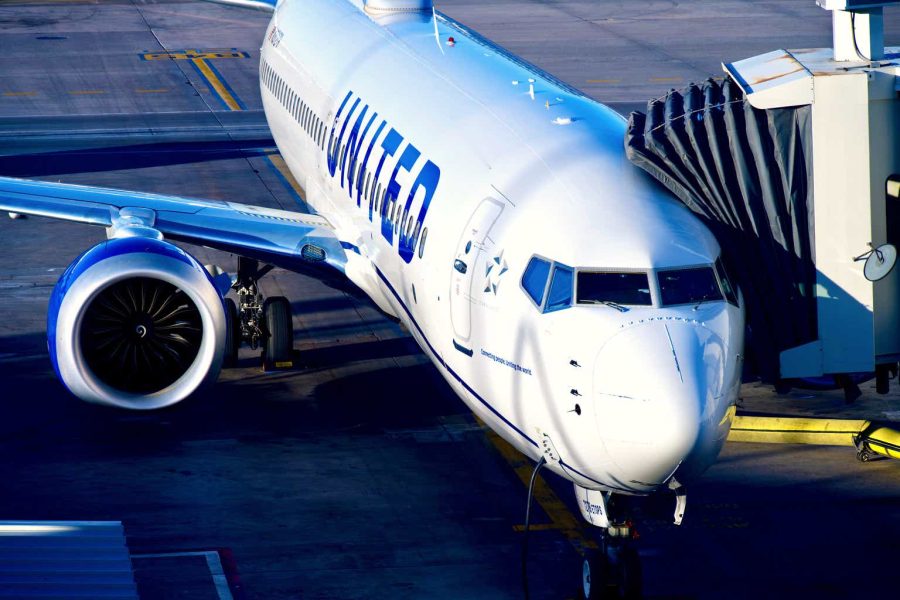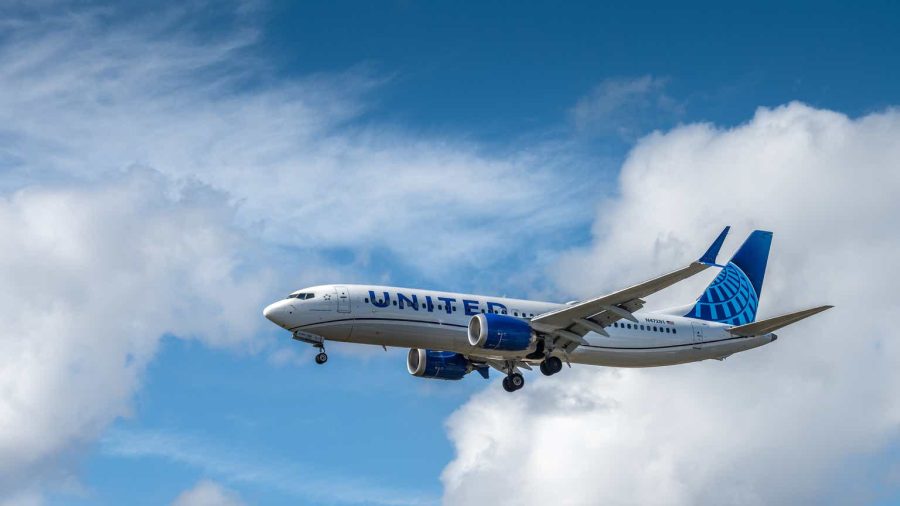July 14, 2024 This Week Top S&P 500 Gainers & Losers
Tesla Q2: The Bottom Is Likely In
Tesla: Time To Take Profits
Microsoft: The Q4 Results Should Surprise You
Tesla: Optimus And FSD Probably Won’t Save The Day
April 23, 2024 Maximizing Profits: When is the Right Time to Sell Your Business?
April 12, 2024 Improve Your Financial Status: A How-To Guide
April 12, 2024 How ZIM Integrated Container Tracking is Revolutionizing Global Trade
March 15, 2024 6 Best Growth Stocks To Buy Now According to Metatrader 5

United Airlines (UAL) Stock Forecast for 2024–2028. Sell or Buy?
Updated: July 27, 2024 (04:06)
Sector: IndustrialsThe share price of United Airlines Holdings, Inc. (UAL) now
50/200 Day Moving Average: $49.98 / $44.5
This figure corresponds to the Average Price over the previous 50/200 days. For United Airlines stocks, the 50-day moving average is the resistance level today.
For United Airlines stocks, the 200-day moving average is the support level today.
Are you interested in United Airlines Holdings, Inc. stocks and want to buy them, or are they already in your portfolio? If yes, then on this page you will find useful information about the dynamics of the United Airlines stock price in 2024, 2025, 2026, 2027, 2028. How much will one United Airlines share be worth in 2024 - 2028?
When should I take profit in United Airlines stock? When should I record a loss on United Airlines stock? What are analysts' forecasts for United Airlines stock? What is the future of United Airlines stock? We forecast United Airlines stock performance using neural networks based on historical data on United Airlines stocks. Also, when forecasting, technical analysis tools are used, world geopolitical and news factors are taken into account.
United Airlines stock prediction results are shown below and presented in the form of graphs, tables and text information, divided into time intervals. (Next month, 2024, 2025, 2026, 2027 and 2028) The final quotes of the instrument at the close of the previous trading day are a signal to adjust the forecasts for United Airlines shares. This happens once a day.
Historical and forecast chart of United Airlines stock
The chart below shows the historical price of United Airlines stock and a prediction chart for the next month. For convenience, prices are divided by color. Forecast prices include: Optimistic Forecast, Pessimistic Forecast, and Weighted Average Best Forecast. Detailed values for the United Airlines stock price can be found in the table below.
Long-term forecasts by years.


When it comes to predicting the future of United Airlines (UAL) stock, several crucial factors must be considered. Recent trends indicate a weakening demand for airline travel, causing concerns for UAL stock prices. According to Q2 2024 earnings, revenue growth lagged behind the increased capacity. This mismatch is putting considerable pressure on unit revenues and necessitating aggressive discounting, further harming profitability.
Critical Factors Influencing UAL Stock Rates
Another pivotal factor is overcapacity. United Airlines, among others, has increased its capacity by 8.3%, outpacing revenue growth of 5.7%. This imbalance dilutes pricing power and compresses profit margins, resulting in lower fares and fluctuating UAL stock rates. Additionally, rising operational costs—including a 10.3% year-over-year increase—are contributing to margin contraction, squeezing profitability.
Analysts are also paying close attention to EPS guidance. United Airlines' current EPS guidance for Q3 2024 ($2.75-$3.25) falls short of the $3.36 expected by analysts. This has created uncertainties and diminished investor confidence, causing volatility in UAL stock prices. Lastly, delays in new aircraft deliveries due to supply chain issues challenge the company's future efficiency and capacity plans, impacting long-term operational costs and service quality.
- Demand Weakening and Industry Sentiment
- Overcapacity
- Cost Management and Margin Contraction
- EPS Guidance and Analyst Expectations
- Delivery Delays of New Commercial Airplanes
Given these multifaceted factors, analysts need to integrate data on demand trends, capacity growth, operational costs, EPS forecasts, and delivery schedules to create the most accurate UAL stock price predictions. By carefully monitoring these variables, analysts can provide a more comprehensive UAL stock forecast, helping investors make informed decisions on whether to buy or sell United Airlines stock.
Keywords: UAL stock forecast, United Airlines name stock forecast, UAL stock buy or sell, is UAL a good stock to buy, UAL stock price prediction, UAL stock price target, buy or sell United Airlines stock, United Airlines stock forecast
Review the original Analysis

Unlocking the Secrets to UAL Stock Forecast: Trends, Estimates, and Guidance Galore!

When fluttering through the maze of stock market predictions, one can't help but land on the intriguing case of UAL stock forecast. In the ever-evolving sky of investment opportunities, certain factors conspire to shape the future of United Airlines' stock rates. It's like navigating a vast ocean, where winds, currents, and celestial bodies guide the ship—only here, the ship is UAL, and the guiding stars are airfare trends, analyst estimates, and company guidance.
Navigating Through Economic Jet Streams
In the not-so-distant future, several events and indicators stand poised to steer the course of UAL stock prices. Firstly, the dance of airfare trends, waving down in May but with the tempo set to rise, as global airline revenue eyes the $1 trillion mark come 2024. This flutter in airfare is but a brief turbulence in United Airlines' broader journey towards financial zenith.
But what really fuels the engines of accurate UAL stock price prediction is the chorus of analyst estimates. As the oracles of Wall Street send forth a rally of optimistic revisions, the sentiment surrounding United Airlines stock forecast lifts off. Within the last 90 days, a squadron of 15 analysts have adjusted their earnings forecasts upwards, tracing a contrail of confidence in the blue sky of investment.
Last but not least, attention must be paid to the captain's announcement—company guidance. Recently, UAL's cockpit provided insights that slightly undershot analyst expectations, sending a ripple through the stock price. Yet, as seasoned navigators understand, such moments may unveil golden opportunities for those looking to board the UAL flight. After all, is UAL a good stock to buy? The company's solid fundamentals and promising journey ahead suggest that now might be the perfect time to secure your boarding pass.
In conclusion, to make the most accurate predictions concerning changes in UAL's company stock price, analysts meticulously chart the course set by airfare trends, tune into the harmony of analyst estimates, and decipher the cryptic messages of company guidance. For those debating whether to buy or sell United Airlines stock, these beacons of information light the path to making informed decisions, transforming the UAL stock price target from a distant dream into a navigable reality.
Review the original Analysis

United Airlines: Poised for a Sky-High Stock Surge?

When it comes to United Airlines (UAL), the stock market seems to be waiting for a takeoff that's been delayed at the gate. But with recent updates, UAL stock forecast suggests we might be cleared for lift-off sooner than expected. Analysts eyeing the UAL stock buy or sell dilemma are keenly watching a trio of vital factors that could send the airline’s shares soaring. First on the radar is UAL's robust Q2 guidance and outlook, promising a $10 EPS target for the year—a beacon indicating strong financial performance is on the horizon. But what else is fueling the optimism?
Navigating Through Market Turbulence
A look beneath the fuselage reveals a couple more engines powering the UAL stock price prediction. A noticeable market disconnect has pegged the stock at near lows despite soaring expectations, flagging potential undervaluation that savvy investors could exploit. Analysts might see this as a contrarian signal—where the UAL stock forecast hints at favorable winds ahead. Meanwhile, United Airlines' enviable financial footing, flush with $14 billion in cash and bolstered by substantial assets, points to imminent capital returns to shareholders. This move could serve as a flare, signaling confidence in UAL's trajectory and enticing more to buy United Airlines stock.
To make the most accurate UAL stock price target predictions, analysts need to account for these dynamics: strong earning guidance, undervaluation correction potential, and the company's capability for rewarding investors. Keeping a pulse on these factors will not only illuminate United Airlines stock forecast but will also help in deciding whether UAL is a good stock to buy, especially for those looking to board a potentially lucrative flight in the stock market.
- Strong Q2 Guidance and Outlook
- Market Disconnect and Undervaluation
- Financial Strength and Potential for Capital Returns

United Continental Holdings is an American airline. United Continental aircraft fly from 360 airports on six continents, and the company makes 5,000 flights a day. Participated in the founding of the Star Alliance aviation alliance.
In 2012, United Continental was named the Best Airline for Traveling North America by Business Traveler magazine. Global Traveler readers have voted for the company’s loyalty program for nine years in a row. Turnover for 2016 – 35.6 billion dollars.
The company was founded in 2010 as a result of the merger of UAL Corporation and Continental Airlines. The new company was named United Continental. In 2013, United Continental launched satellite Wi-Fi for the first time in aviation history.
United Airlines daily forecast for a month
| Date | Target | Pes. | Opt. | Vol., % |
|---|---|---|---|---|
| Jul 29 | 48.05 | 47.31 | 48.77 | 3.09 |
| Jul 30 | 47.67 | 47.19 | 48.00 | 1.72 |
| Jul 31 | 48.10 | 47.55 | 48.33 | 1.64 |
| Aug 01 | 47.26 | 46.71 | 47.94 | 2.63 |
| Aug 02 | 47.15 | 46.60 | 47.60 | 2.14 |
| Aug 03 | 47.88 | 47.40 | 48.08 | 1.43 |
| Aug 04 | 48.21 | 47.70 | 48.92 | 2.57 |
| Aug 05 | 47.88 | 47.62 | 48.60 | 2.05 |
| Aug 06 | 47.54 | 47.11 | 48.18 | 2.28 |
| Aug 07 | 47.14 | 46.82 | 47.39 | 1.23 |
| Aug 08 | 47.48 | 47.04 | 48.11 | 2.28 |
| Aug 09 | 47.59 | 47.04 | 48.27 | 2.61 |
| Aug 10 | 48.25 | 47.70 | 48.88 | 2.49 |
| Aug 11 | 48.18 | 47.70 | 48.62 | 1.94 |
| Aug 12 | 48.59 | 47.98 | 49.05 | 2.23 |
| Aug 13 | 48.43 | 47.82 | 48.98 | 2.43 |
| Aug 14 | 48.69 | 48.42 | 48.99 | 1.19 |
| Aug 15 | 49.52 | 49.32 | 49.93 | 1.24 |
| Aug 16 | 48.60 | 48.13 | 49.35 | 2.54 |
| Aug 17 | 48.46 | 47.98 | 48.99 | 2.10 |
| Aug 18 | 48.20 | 47.74 | 48.40 | 1.37 |
| Aug 19 | 48.12 | 47.87 | 48.67 | 1.67 |
| Aug 20 | 48.61 | 48.19 | 49.07 | 1.82 |
| Aug 21 | 49.18 | 48.45 | 49.48 | 2.13 |
| Aug 22 | 50.02 | 49.22 | 50.73 | 3.07 |
| Aug 23 | 50.40 | 49.77 | 50.95 | 2.37 |
| Aug 24 | 50.68 | 50.30 | 51.17 | 1.73 |
| Aug 25 | 49.82 | 49.60 | 50.02 | 0.84 |
| Aug 26 | 49.87 | 49.55 | 50.27 | 1.45 |
| Aug 27 | 49.18 | 48.43 | 49.89 | 3.03 |
United Airlines Daily Price Targets
United Airlines Stock Forecast 07-29-2024.
Forecast target price for 07-29-2024: $48.05.
Positive dynamics for United Airlines shares will prevail with possible volatility of 2.995%.
Pessimistic target level: 47.31
Optimistic target level: 48.77
United Airlines Stock Forecast 07-30-2024.
Forecast target price for 07-30-2024: $47.67.
Negative dynamics for United Airlines shares will prevail with possible volatility of 1.688%.
Pessimistic target level: 47.19
Optimistic target level: 48.00
United Airlines Stock Forecast 07-31-2024.
Forecast target price for 07-31-2024: $48.10.
Positive dynamics for United Airlines shares will prevail with possible volatility of 1.612%.
Pessimistic target level: 47.55
Optimistic target level: 48.33
United Airlines Stock Forecast 08-01-2024.
Forecast target price for 08-01-2024: $47.26.
Negative dynamics for United Airlines shares will prevail with possible volatility of 2.563%.
Pessimistic target level: 46.71
Optimistic target level: 47.94
United Airlines Stock Forecast 08-02-2024.
Forecast target price for 08-02-2024: $47.15.
Negative dynamics for United Airlines shares will prevail with possible volatility of 2.100%.
Pessimistic target level: 46.60
Optimistic target level: 47.60
United Airlines Stock Forecast 08-03-2024.
Forecast target price for 08-03-2024: $47.88.
Positive dynamics for United Airlines shares will prevail with possible volatility of 1.414%.
Pessimistic target level: 47.40
Optimistic target level: 48.08
UAL (UAL) Monthly Stock Prediction for 2024
| Month | Target | Pes. | Opt. | Vol., % |
|---|---|---|---|---|
| Aug. | 49.03 | 47.09 | 50.36 | 6.48 |
| Sep. | 52.25 | 48.77 | 53.67 | 9.11 |
| Oct. | 53.34 | 51.18 | 55.59 | 7.94 |
| Nov. | 50.89 | 47.82 | 52.63 | 9.14 |
| Dec. | 48.32 | 45.50 | 50.37 | 9.67 |
United Airlines forecast for this year
United Airlines Stock Prediction for Aug 2024
An uptrend is forecast for this month with an optimal target price of $49.0327. Pessimistic: $47.09. Optimistic: $50.36
United Airlines Stock Prediction for Sep 2024
An uptrend is forecast for this month with an optimal target price of $52.2541. Pessimistic: $48.77. Optimistic: $53.67
United Airlines Stock Prediction for Oct 2024
An uptrend is forecast for this month with an optimal target price of $53.3358. Pessimistic: $51.18. Optimistic: $55.59
United Airlines Stock Prediction for Nov 2024
An downtrend is forecast for this month with an optimal target price of $50.8877. Pessimistic: $47.82. Optimistic: $52.63
United Airlines Stock Prediction for Dec 2024
An downtrend is forecast for this month with an optimal target price of $48.3229. Pessimistic: $45.50. Optimistic: $50.37
United Airlines (UAL) Monthly Stock Prediction for 2025
| Month | Target | Pes. | Opt. | Vol., % |
|---|---|---|---|---|
| Jan | 47.80 | 45.61 | 49.56 | 7.99 |
| Feb | 45.78 | 44.75 | 47.02 | 4.82 |
| Mar | 47.43 | 45.34 | 49.31 | 8.05 |
| Apr | 46.57 | 44.27 | 49.76 | 11.04 |
| May | 42.88 | 40.65 | 45.82 | 11.29 |
| Jun | 40.49 | 39.62 | 43.33 | 8.58 |
| Jul | 36.85 | 35.92 | 39.37 | 8.76 |
| Aug | 35.36 | 34.18 | 37.81 | 9.60 |
| Sep | 37.01 | 35.48 | 38.01 | 6.66 |
| Oct | 37.64 | 34.97 | 40.35 | 13.35 |
| Nov | 40.32 | 38.50 | 42.24 | 8.85 |
| Dec | 40.61 | 39.04 | 41.52 | 5.99 |
United Airlines (UAL) Monthly Stock Prediction for 2026
| Month | Target | Pes. | Opt. | Vol., % |
|---|---|---|---|---|
| Jan | 39.15 | 36.86 | 40.59 | 9.20 |
| Feb | 38.30 | 36.13 | 40.47 | 10.73 |
| Mar | 39.23 | 37.15 | 40.15 | 7.48 |
| Apr | 40.40 | 37.78 | 43.09 | 12.32 |
| May | 41.60 | 39.28 | 42.61 | 7.82 |
| Jun | 39.69 | 37.19 | 41.40 | 10.18 |
| Jul | 42.90 | 41.71 | 45.57 | 8.47 |
| Aug | 42.83 | 41.71 | 45.10 | 7.52 |
| Sep | 45.95 | 43.51 | 48.22 | 9.78 |
| Oct | 49.55 | 46.07 | 51.95 | 11.33 |
| Nov | 47.85 | 44.71 | 50.74 | 11.88 |
| Dec | 43.54 | 41.19 | 44.49 | 7.40 |
United Airlines (UAL) Monthly Stock Prediction for 2027
| Month | Target | Pes. | Opt. | Vol., % |
|---|---|---|---|---|
| Jan | 40.14 | 37.68 | 42.70 | 11.76 |
| Feb | 38.80 | 36.49 | 39.53 | 7.68 |
| Mar | 38.03 | 35.98 | 40.29 | 10.70 |
| Apr | 40.77 | 38.09 | 41.58 | 8.38 |
| May | 40.47 | 39.24 | 43.10 | 8.96 |
| Jun | 42.26 | 41.35 | 44.28 | 6.61 |
| Jul | 43.67 | 41.62 | 46.81 | 11.08 |
| Aug | 44.73 | 43.56 | 47.83 | 8.92 |
| Sep | 43.44 | 41.02 | 45.75 | 10.34 |
| Oct | 45.90 | 43.59 | 47.64 | 8.50 |
| Nov | 46.11 | 44.78 | 49.43 | 9.40 |
| Dec | 43.08 | 41.57 | 44.20 | 5.96 |
United Airlines (UAL) Monthly Stock Prediction for 2028
| Month | Target | Pes. | Opt. | Vol., % |
|---|---|---|---|---|
| Jan | 44.51 | 42.79 | 45.48 | 5.90 |
| Feb | 44.51 | 43.43 | 47.72 | 8.98 |
| Mar | 43.39 | 40.39 | 45.11 | 10.48 |
| Apr | 46.36 | 43.19 | 47.74 | 9.53 |
| May | 47.40 | 44.38 | 48.60 | 8.69 |
| Jun | 48.34 | 46.12 | 51.61 | 10.62 |
| Jul | 51.52 | 48.09 | 53.23 | 9.67 |
| Aug | 50.22 | 46.97 | 51.40 | 8.62 |
| Sep | 49.77 | 46.99 | 51.47 | 8.70 |
| Oct | 53.22 | 49.91 | 55.23 | 9.63 |
| Nov | 54.89 | 52.82 | 55.88 | 5.48 |
| Dec | 55.49 | 54.34 | 58.58 | 7.25 |
United Airlines information and performance
ROBERT S. RIVKIN - WHQLD, 233 SOUTH WACKER DRIVE, CHICAGO, IL, US
Market capitalization of the United Airlines Holdings, Inc. is the total market value of all issued shares of a company. It is calculated by the formula multiplying the number of UAL shares in the company outstanding by the market price of one share.
EBITDA of United Airlines is earnings before interest, income tax and depreciation of assets.
P/E ratio (price to earnings) - shows the ratio between the price of a share and the company's profit
Price/earnings to growth
Dividend Per Share is a financial indicator equal to the ratio of the company's net profit available for distribution to the annual average of ordinary shares.
Dividend yield is a ratio that shows how much a company pays in dividends each year at the stock price.
EPS shows how much of the net profit is accounted for by the common share.
Trailing P/E depends on what has already been done. It uses the current share price and divides it by the total earnings per share for the last 12 months.
Forward P/E uses projections of future earnings instead of final numbers.
Enterprise Value (EV) /Revenue
The EV / EBITDA ratio shows the ratio of the cost (EV) to its profit before tax, interest and amortization (EBITDA).
Number of issued ordinary shares
Number of freely tradable shares
Shares Short Prior Month - the number of shares in short positions in the last month.
United Airlines (UAL) stock dividend
United Airlines last paid dividends on 01/07/2008. The next scheduled payment will be on 01/23/2008. The amount of dividends is $None per share. If the date of the next dividend payment has not been updated, it means that the issuer has not yet announced the exact payment. As soon as information becomes available, we will immediately update the data. Bookmark our portal to stay updated.
Last Split Date: 01/01/1970
Splitting of shares is an increase in the number of securities of the issuing company circulating on the market due to a decrease in their value at constant capitalization.
For example, a 5: 1 ratio means that the value of one share will decrease 5 times, the total amount will increase 5 times. It is important to understand that this procedure does not change the capitalization of the company, as well as the total value of assets held in private hands.

















































